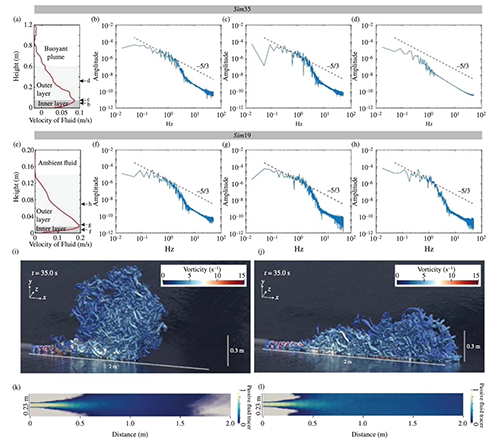Transient Dynamics in Particle-laden Density Currents: Insights Into Dilute Pyroclastic Density Current Runout

Breard E.C.P., M. Cerminara, J. Dufek, and S. O’Donnell, (2025).
In Particulate Gravity Currents (eds B. Kneller, E. Meiburg, B. Vowinckel and Z. He). https://doi.org/10.1002/9781394216727.ch14
Abstract
Pyroclastic density currents (PDCs) are complex, multiphase systems where density stratification controls the flows’ mixing, deposition, and runout, presenting significant challenges in hazard forecasting. In dilute PDCs, a decrease in density leads to buoyancy reversal as the mixture becomes lighter than the surrounding fluid and transforms into a thermal. Many numerical and analytical models make the simplifying assumption of vertically well-mixed currents. To investigate the influence of density stratification, we performed 3D multiphase flow simulations that reproduce laboratory experiments. All currents develop self-similar velocity profiles. However, buoyant currents exhibit minimum density at the nose, whereas nonbuoyant currents display a typical Rousean density stratification. This distinction is determined by the dynamic interplay between density stratification and thermal buoyancy, which consequently governs the flow runout. Our findings indicate that fluid buoyancy prolongs particle settling, enhances vertical mixing, and minimizes lateral spreading, consistent with experimental findings. The bulk Richardson number, however, fails to accurately describe the entrainment coefficient of these flows through the well-known scaling derived from turbidity currents, thereby underscoring a need to reassess the parameterization applied in depth-averaged models. These models, used for simulating dilute PDCs, need to account for their highly transient nature to reliably assess their hazards.



Devi effettuare l'accesso per postare un commento.